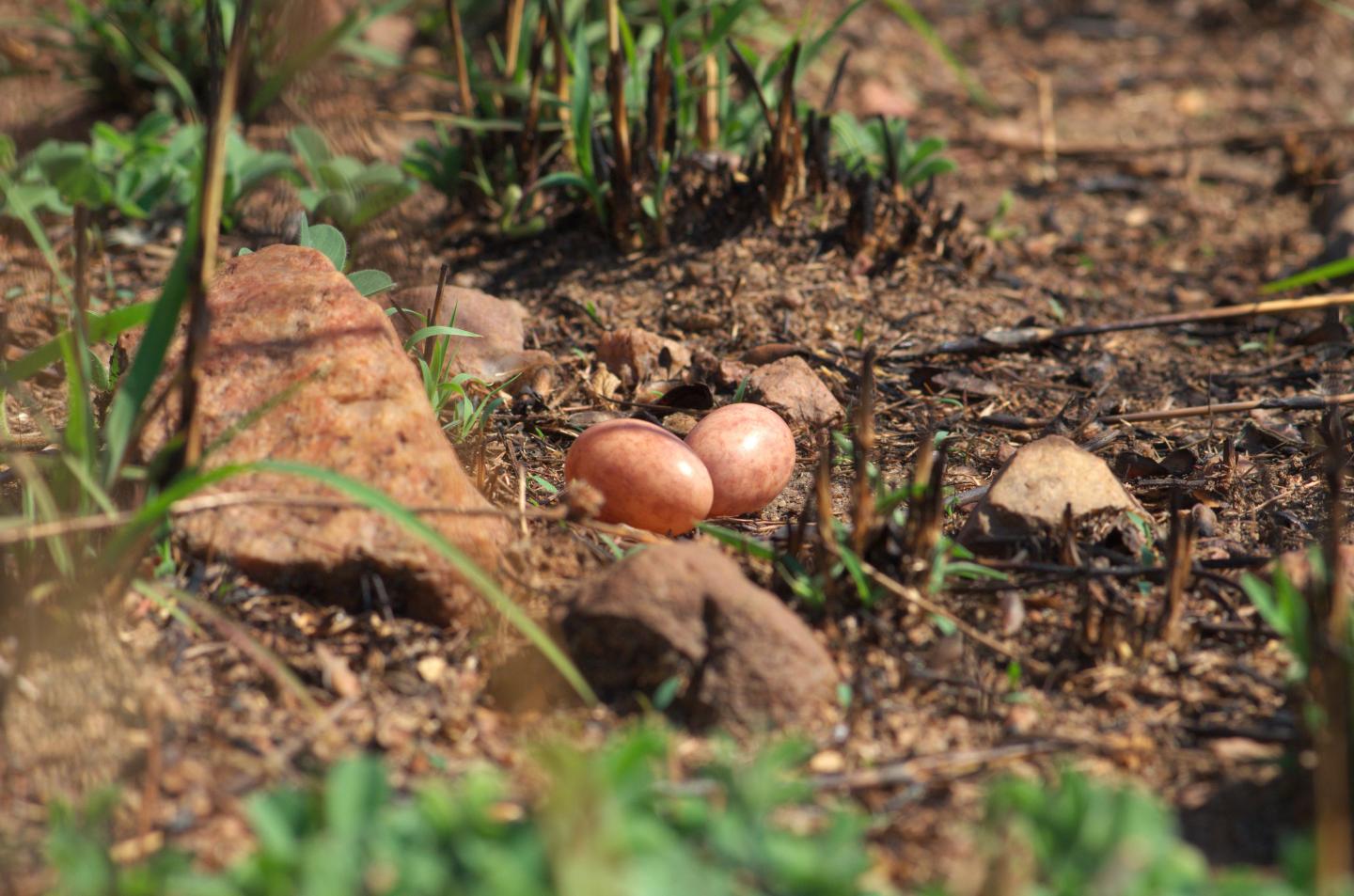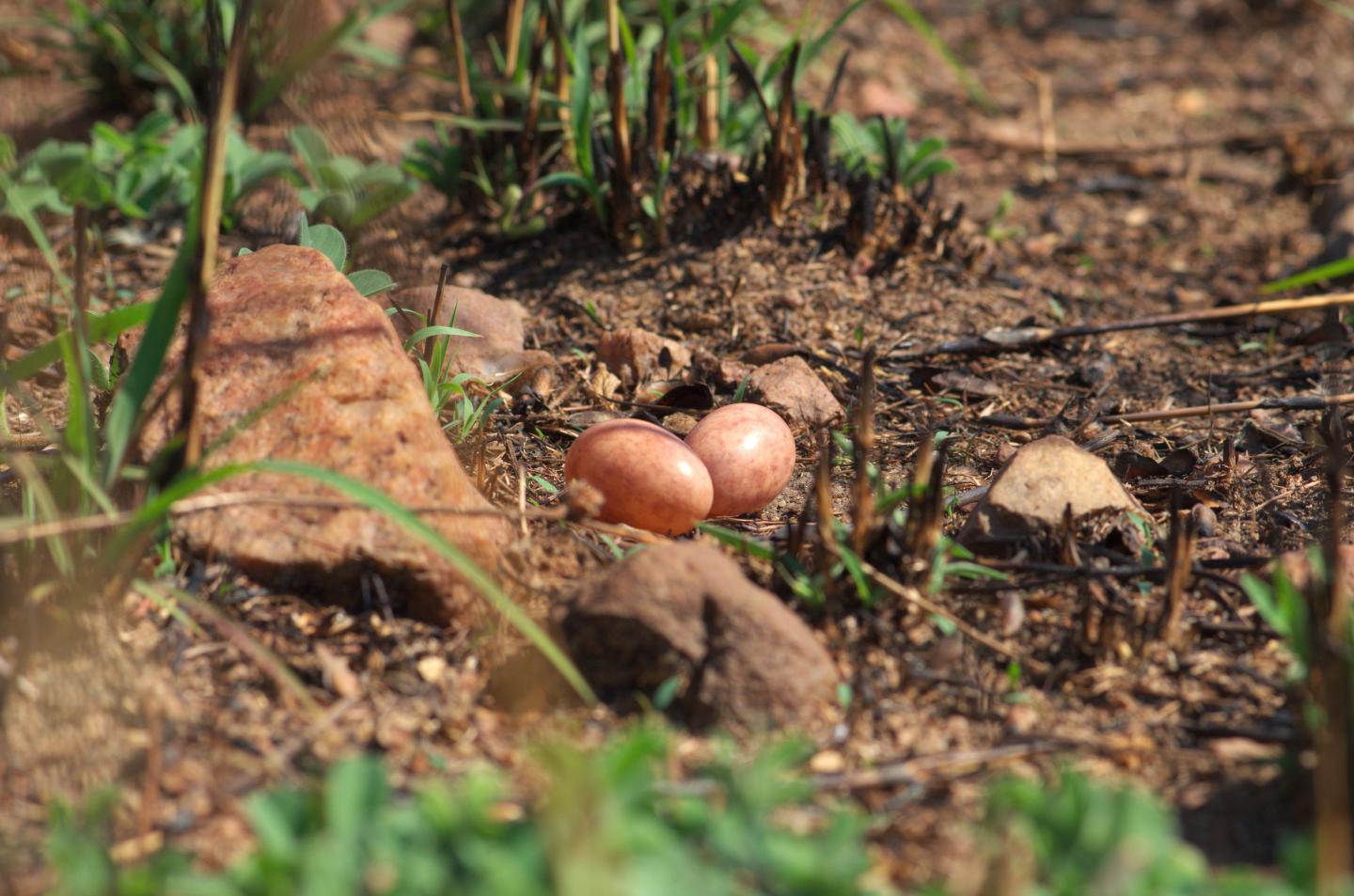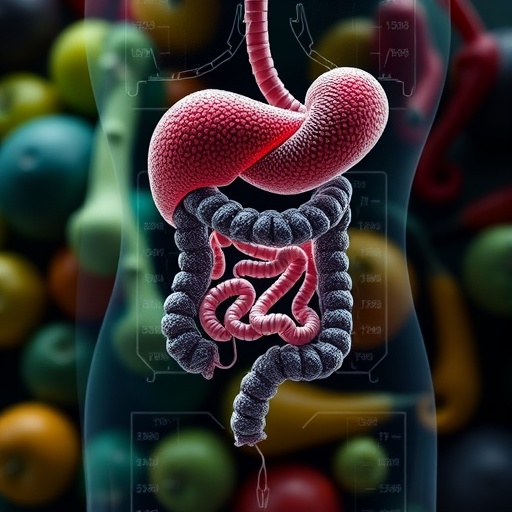
Credit: Project Nightjar
Nesting birds time their escape from an approaching predator depending on how well camouflaged their eggs and their own bodies are, researchers from the University of Exeter and the University of Cambridge have discovered.
This is the first study to show that the camouflage of an animal or that of its offspring can explain the variation in risk-taking behaviour when approached by a predator.
Researchers worked with a team of skilled local assistants in Zambia to find the nests of several species of ground-nesting birds. Once a nest was found they monitored its progress, recording the escape distance of the adult bird each time they approached and, using camera traps, identified key predators such as banded mongooses, vervet monkeys and grey-headed bush shrikes — and even human children.
In complex environments it is hard for animals to perfectly match their background. When an animal's camouflage is poor it has a higher risk of being detected and eaten by a predator, so it should more readily flee from an approaching threat. The researchers therefore set out to test whether the distances at which birds fled from their nests on the exposed ground was related to the camouflage of their plumage and eggs.
They found that birds that usually flee from predators at long range, such as plovers and coursers, stayed on their nest for longer when the pattern of their eggs was a better match to the background. They also adjusted their behaviour in the heat of the middle of the day, letting a predator approach a little closer before fleeing. This probably allows them to shade their eggs for as long as possible, and so reduce the chance of them cooking in the African sun. By contrast, another group of birds, the nightjars, usually sit tight as predators approach so that their eggs are concealed by their camouflaged bodies until the last minute. Sure enough, nightjars stayed on their nests longer when the colour and pattern of their own plumage, rather than that of their eggs, was a better match to the background.
The team photographed the adult birds and eggs using specially-calibrated digital cameras. Sophisticated computer models of animal vision were used to map images to each predator's visual abilities. Birds have high colour sensitivity and can see ultra-violet wavelengths. The banded mongoose has relatively poor colour vision and can only see colours equivalent to blues and yellows.
Study author, Jared Wilson-Aggarwal, a PhD researcher at the University of Exeter's Environment and Sustainability Institute, said: "Plovers, coursers and nightjars nest on the bare ground during the Zambian dry season. Temperatures can get very high and if approached by a predator the adult bird has to make a hard decision to either, sit tight and continue shading their eggs or to flee the nest and prioritise their own survival."
"Our results suggest that camouflage is able to mitigate not only predation risk but also thermal risks, by permitting adults to shade their eggs for longer when the risk of them overheating is highest."
Martin Stevens from the University of Exeter who, along with Claire Spottiswoode from the University of Cambridge, co-led the project said: "Our study shows how animals monitor their own camouflage and that of their offspring, and use this to guide how they behave. It complements a small but growing number of studies showing how important behaviour is in facilitating camouflage in nature."
Claire Spottiswoode from the University of Cambridge added, "Fifty years ago, the pioneering ecologist David Lack predicted that birds with camouflaged plumage should benefit most from sitting tight on their eggs until the very last minute. Nightjars are some of the most beautifully camouflaged animals in the world, and sure enough the African nightjars we studied often only fled their nests when we were at arm's length!"
Escape Distance in Ground-Nesting Birds Differs with Individual Level of Camouflage is published in the journal The American Naturalist
###
Media Contact
Kerra Maddern
[email protected]
@uniofexeter
http://www.exeter.ac.uk





